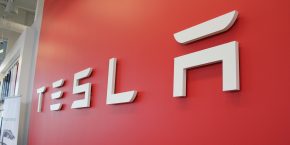
As we reported last month, Tesla’s plans to bring self-driving cars to market without using LiDAR sensors are raising a few eyebrows. That’s because we have been told for years now by most people in the industry that it wasn’t achievable, but the company moved forward with its plans in a big way last month when it started producing all cars with a self-driving-ready hardware suite without LiDAR.
The Drive is now confusing quite a few people about Tesla’s strategy by claiming that the automaker is actually planning to use LiDAR in a new article titled: “Despite Public Stance, Musk Secretly Plans to Use LiDAR in Future Tesla Models: Ignore Musk’s tweets and what he’s said in earnings calls, a Tesla equipped with LiDAR is in the works.” (Update: the Drive has since changed its headline to nuance the claim)
But it’s actually not the case. Here’s why:
In her article, Liane Yvkoff is basing her claim on the fact that a few Tesla Model Ss were spotted with LiDAR sensors in the past and on an anonymous source “familiar with the technology” claiming that Tesla “most likely will use LiDAR systems in future models”
First off, the anonymous source is “familiar with the [LiDAR] technology” and not with Tesla’s Autopilot and self-driving program. There’s currently mountains of money going into LiDAR companies: Ford and Baidu recently invested $150 million in Velodyne and Quanergy recently raised $90 million in Series B funding at a valuation well over $1 billion.
These investments have been justified by the idea that LiDAR is absolutely essential to self-driving technology and that the industry needs to bring down the cost significantly in order to make the expensive sensors commercially available.
While it’s certainly true that the cost needs to come down and that LiDAR sensors can be useful to self-driving cars, it’s not true that they are essential to a sensor suite on a self-driving car. As we explained in our last piece about Tesla new hardware suite, sensors only need to be better than the current sensors used to drive vehicles: human eyes (and ears to a certain degree).
Tesla’s 8 cameras, 360 ultrasonics, GPS and radar definitely represent a step up from human sensors. Of course, we also have to account for image processing, but that’s another matter. We need to make the distinction between the sensors used to collect data about the driving environment, cameras/LiDAR/radar versus human eyes, and the image processing and decision-making part of the equation, which in the case of self-driving cars takes the form of software on computing machines versus good old-fashion brain power for humans.
Back to the sensors. So what about those Tesla vehicles with LiDAR sensors spotted in the past few months and referenced in The Drive’s article?

Tesla Model S prototype with Velodyne Lidar sensor spotted in Palo Alto
They are definitely part of Tesla’s fleet since they have manufacturer plates, but as we reported before, it doesn’t mean that Tesla has any plan to make those sensors part of a hardware suite in its future vehicles. Though they are part of Tesla’s development program for Autopilot and self-driving.
As we reported, those are used for benchmarking – more especially for “ground truthing”, which is the practice of collecting ground-truth data to enable calibration of remote-sensing data and help develop systems (in this case, self-driving algorithms) around the data.
Lidar sensors are useful for this type of application, especially since Tesla is trying to create similar cloud point map as LiDAR’s but with real-time data from radar sensors.
Now being useful in the development of those systems doesn’t make them useful to collect real-time data when driving, especially considering they don’t see in all conditions like snow, rain or fog. Radar is a much more useful sensor for those conditions.
In conclusion, Tesla is indeed using LiDAR sensors as part of the development of its self-driving technology, but in opposition to the recent report from The Drive, the automaker doesn’t plan to use the sensors “in future vehicles”. Tesla is already producing its self-driving sensor suite and the company is now focusing on developing the “brain” of its system: ‘Tesla Vision‘.
There’s a reason that Tesla has equipped every single car off its assembly line with a supercomputer. Tesla vehicles now have better sensors and more computer power than humans. Now they just need to have better image processing and decision-making capability than a human. It’s only a software problem now.
Update: A Tesla spokesperson released the following statement regarding LiDAR after The Drive’s piece:
The claim that Tesla may be planning to use LiDAR as part of its self-driving hardware suite is fundamentally untrue. We regularly test our own technologies against other sensors to calibrate our camera, sonar and radar system.
FTC: We use income earning auto affiliate links. More.




Comments